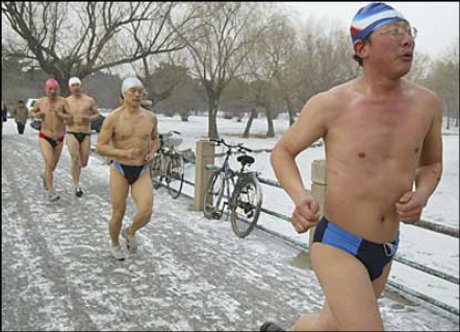
Except for the few hottest days of the year, most people aren’t going to question your sanity when you’re out running in July or August. But keep running through the winter, and eventually someone is going to ask you, “Aren’t you afraid that you’ll freeze your lungs?”
Even my dad used to ask me this when I started running in high school. I was taught to respect my elders, so I didn’t laugh in his face or anything, but this question is one of the silliest I’ve ever heard. Have you ever met someone who has frozen a lung? Of course not. As the air you breathe works its way into your lungs, it’s warmed more than enough to keep it from freezing anything.
I bet you have met someone who was in pretty good shape, but stopped working out when it got cold, and started the spring with more weight and less fitness. That’s a shame, and an unnecessary one, because winter running can be some of the best of the year. And I’m a New Englander, so it’s not like I’m sitting here espousing the joys of winter running from my house in Los Angeles.
I get a certain pride out of knowing that on those short, dark, cold days with plenty of windchill, when most people are always under shelter, I’ve been outside moving under my own power. I know that when people look out their windows and see me running down their street they think that I’m both miserable and insane. Those people don’t know that when I’m done with my run, I’ll enjoy being inside that much more. Running in the winter involves a bigger mental aspect to it than running during the rest of the year. I admit that after doing this for 30 years, I still sometimes have a tough time getting psyched to run when there’s only been eight hours of daylight for the last couple of months. You just need to keep focused on your goals. After awhile, you’ll learn how to get out the door and through those tough first few minutes until you start getting warmed up. I can usually do this by reminding myself how much better I’ll feel after my run. Also, ask yourself if you would be so ready to bag your run if it were sunny and 70 degrees.



